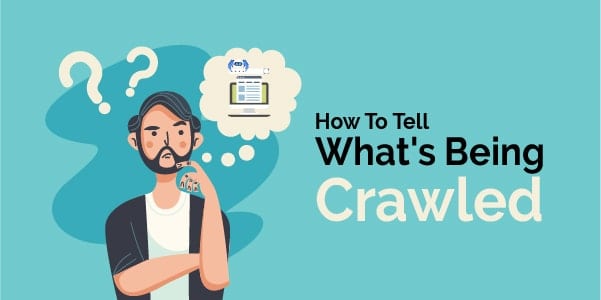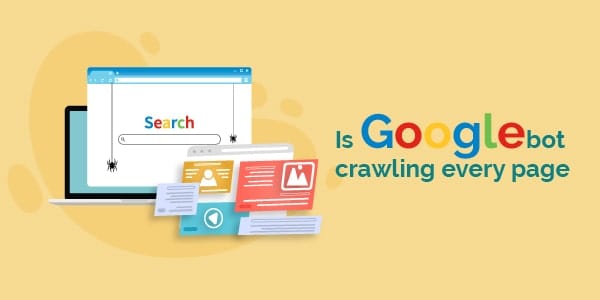Understanding Googlebot and making it work for you
Link building is vital for increasing brand awareness. For those that aren’t in the know, link building consists of actions you take that aim to build and increase the number of inbound links to your webpage to increase your rankings within search engines. So now you’ve got an idea of how link building could help you, now we’re going to tell you to….
……STOP
Yes, that’s right. Stop building links, right now.
This may sound like madness, but there is a method behind it. You need to stop building links and creating great content on your site until you know what Googlebot is doing.
With this understanding, you will get the maximum exposure for your website and its content.
You can keep writing brilliant website content on a fantastic, exciting looking website and acquiring amazing external links, all of which are important, but the indexing of your page will not happen if Googlebot does not visit it. This, in turn, means it will not show up in the search engine results pages (SERPs) when a user asks a question in a search engine.
To put it bluntly, however great and useful your content is, if it’s not reaching the search engine, you might as well be speaking to an empty room.

How To Tell What's Being Crawled?
Looking at your server logs should help you find out which search engines are finding your pages and which pages they’re finding.
OK, I’m in the logs, what am I looking for?
Knowing what to look for is essential in fixing the problems that Googlebot is having getting around your site. Here are a few questions you might want to ask of your server logs.

Firstly, is Googlebot crawling every page?
Does Googlebot have time to look at and index all the pages of your website on a visit? Or, is your website set up so that it simply does not have the time in its crawl budget to do so.
Google defines crawl budget as the number of pages Googlebot crawls and indexes each time it visits a website, with Google setting a maximum crawl rate limit per site. The popularity of the site, along with the freshness of content, are two of the main factors Googlebot uses to determine which pages to crawl.
It is, therefore, extremely important to optimise your use of the Google Crawl Rate limit when you set up your site and when you add or change your site content. This should ensure Googlebot indexes your pages as quickly as possible and targets them in a way that optimises your exposure. Your server log will tell you where Googlebot has been.
How Long Does It Take? Can I speed Googlebot up?
It can take many months for Googlebot to fully index a site; especially for sites with many pages. It is less of an issue for smaller sites, but it is still important to understand the process and maximise how Googlebot interacts and crawls your pages. The more URLs your website has, the more important it is to understand the process of crawl budget optimisation.
The presence of a sitemap makes it easier for Googlebot to find your most important pages, which ultimately will lead to a higher crawl limit.
Is your website slow to load? Or do you have pages in particular that are slow to load due to the content?
The more time it takes to look, the more your crawl rate limit will drop, meaning that Googlebot has less time to find what you really want it to find on your website.
Do you have many redirects to other pages or sites?
All of these will eat into Googlebot’s allocated crawl limit for your site, leading to fewer pages on your site being visited each time Googlebot passes by; effectively, reducing your indexing exposure and lowering your position in search engine rankings. This means that some of the potentially crucial information you need to show is simply not picked up.
Are you running your website with as few errors as possible?
The less ‘superfluous’ content, links and redirections you have, the greater you will benefit from Googlebot’s crawl limit. Continuing server errors also add to the reduction of the time Googlebot spends on your search, resulting in, as we said earlier, less indexing, and ultimately less exposure in search engine rankings. You do not want to cause Googlebot any additional workload in navigating your website, for maximum results.
So, what are we saying?
Website content is extremely important and obviously links matter, but they alone are not enough. What is the point of having an amazing website with lots of useful information if no one gets to see it?
If you want a better return on your investment from your efforts, you first need to understand what Googlebot is doing. Optimising your pages will reap rewards, doing some of the hard work for you to help your site crawl up the rankings. As your site becomes more visible to those searching the web, it will lead to more page traffic and yet more reason for Googlebot to spend more time on your site – happy days!
Always keep in mind that the first stage of ranking is crawling – the higher the crawl rate, the more interaction and interest will be created, and the more exposure your website will generate holistically.
Is it a one-shot deal?
Well, nothing that’s worth it comes easy we’re afraid. While understanding what Googlebot is and how it can help you could help your site immensely, it is not something you can just forget about. You will need to monitor it, as parameters will change from time to time!
Once you’ve got this sorted, then off you can go to create that awesome website content that will keep your new visitors coming back to your site – and now, they’ll know where to find you!

